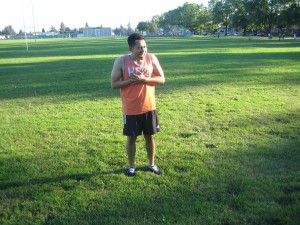Gunshot and stab wounds to the chest are the most common causes of penetrating chest trauma. These wounds are classified according to their velocity and the speed at which a bullet or penetrating object enters the chest wall. Stab wounds are generally considered low-velocity trauma due to the weapon only destroying a relatively small area around the wound with knives and switchblades being the most common instruments causing penetrating chest wounds.

Gunshot and stab wounds to the chest appear grossly gruesome or deceptively clean because pneumothorax, hemothorax, lung contusion, cardiac tamponade and along with severity and profuse bleeding can occur even with the smallest entry wound to the chest, even one caused by a small-diameter instrument such as an ice pick. It is therefore very vital that an extensive physical assessment be done in order to completely evaluate the full extent of the injury as well as initiate the appropriate treatment measures to persons with gunshot and/or stab wounds to the chest.
Classification of gunshot and stab wounds
Gunshot and stab wounds are generally classified as low, medium and high velocity entrance wounds to the chest. Stab wounds are generally considered low velocity since the force it usually takes to penetrate the chest cavity is not as high as compared with gunshots to the chest. The factors that generally determine the velocity resulting extent of the damage to the underlying lung tissues of the respiratory system include the distance from which the gun was fired, the caliber of the gun and the type, construction and sized of the bullet and the number of rounds fired that hit vital parts of the chest.
Extent of damage caused by gunshot and stab wounds
A bullet or penetrating wound from a gunshot and stab wound can cause significant damage to the chest along a defined pathway and can produce a variety of pathophysioloic changes to the cardiopulmonary system in general. The bullet or shrapnel from a penetrating wound could ricochet off bony structures and cause severe damage to the underlying tissues of the cardio and pulmonary system as well as cause massive bleeding if a large artery is severed or cut. If the diaphragm is involved in the injury caused by either a gunshot or stab wound to the chest, the injury caused can possibly be life-threatening which can quickly lead to death if not properly provided with medical treatment.
Medical management of gunshot and stab wounds
The objective of immediate management is to restore and maintain cardiopulmonary function. After an adequate airway becomes patent and secured ventilation it is imperative that the physician or nurse to examine signs for intrathoracic and intra abdominal injuries especially signs for shock due to massive internal bleeding. After the status of the individual and stabilized, a large bore intravenous needle is inserted for fluid and blood replacement, a nasogastric tube is inserted and connected to a low pressure suction to prevent aspiration and decompress the gastrointestinal tract. Shock is simultaneously treated with the use of colloid solutions, crystalloids or blood products as indicated by the patient’s present condition. Furthermore, a chest tube is inserted into the pleural space in most patients inflicted with gunshot and stab wounds to achieve rapid and continuing lung expansion.
